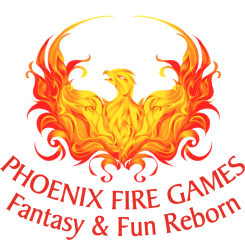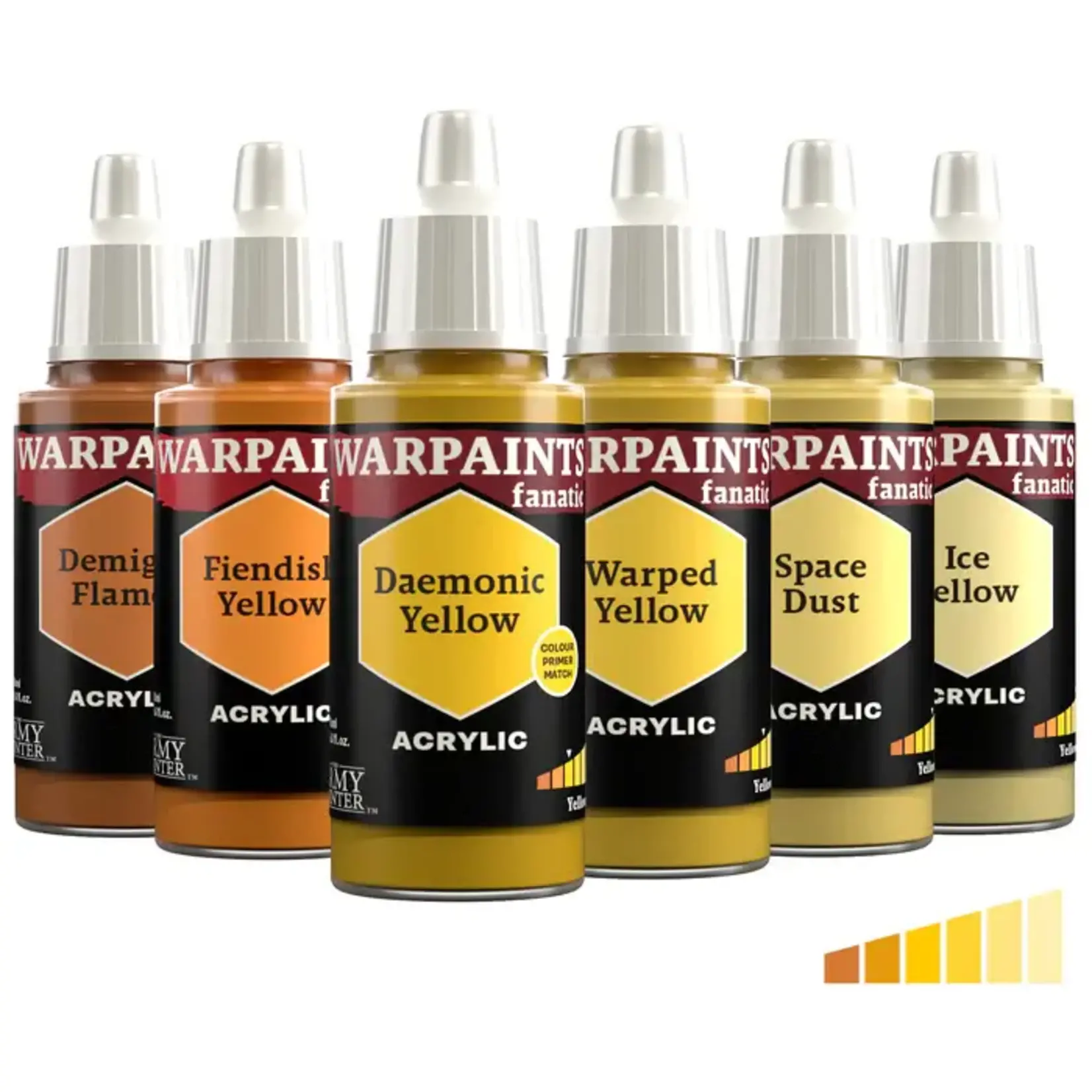Bring warmth and radiance to your miniatures with the Flexible Triad: Yellows. With these colours, you can create luminous effects and capture the essence of mystical shining crystals, flames, and light sources like torches and lanterns. The triad is great for a knight’s livery, sci-fi armour, and the frightening eyes of a monster. Whether you aim to depict the light shining from a lantern or the subtle illumination emanating from an enchanted object, this range of yellows lets you master the art of convincing light effects and auras.
The Yellows Triad is suitable for projects across all genres of miniature painting, from historical and military figures to fantasy creatures and sci-fi models.
The Flexible Triad: Yellows consists of:
Warpaints Fanatic: Demigod Flames
-The Warpaints Fanatic: Demigod Flames is a deep orange yellow that is a suitable base colour for any yellow project. It’s the darkest tone from the “Yellows” Flexible Colour Triad and its Practical Colour Name is “Deep Orange Yellow”.
- Warpaints Fanatic: Fiendish Yellow
- The Warpaints Fanatic: Fiendish Yellow is an orange yellow that works well as a base coat or layer when working up to yellow. It’s the second-darkest tone from the “Yellows” Flexible Colour Triad and its Practical Colour Name is “Orange Yellow”.
- Warpaints Fanatic: Daemonic Yellow
- The Warpaints Fanatic: Daemonic Yellow is a vivid yellow that matches the Warpaint Air and Colour Primer of the same name. It’s one of the two middles tones from the “Yellows” Flexible Colour Triad and its Practical Colour Name is “Vivid Yellow”.
- Warpaints Fanatic: Warped Yellow
- The Warpaints Fanatic: Warped Yellow is a brilliant yellow that is versatile as a mid-tone and highlight colour. It’s one of the two middles tones from the “Yellows” Flexible Colour Triad and its Practical Colour Name is “Brilliant Yellow”.
- Warpaints Fanatic: Space Dust
- The Warpaints Fanatic: Space Dust is a yellow that works well as a light layer or highlight tone. It’s the second-lightest tone from the “Yellows” Flexible Colour Triad and its Practical Colour Name is “Light Yellow”.
- Warpaints Fanatic: Ice Yellow
- The Warpaints Fanatic: Ice Yellow is a very light yellow that is perfect for final highlights and mixing. It’s the lightest tone from the “Yellows” Flexible Colour Triad and its Practical Colour Name is “Very Light Yellow”.
The Flexible Colour Triad System is a segment, or family, of six colours that range from dark to light with a consistent hue. This system allows you to easily select paints that create a natural colour progression on your miniatures. This is an easy way to create a colour scheme for your miniature when army painting because you always have 27 Flexible Triads to choose from instead of mixing colours.
The system builds upon the traditional triad system by introducing more versatility and adaptability in colour selection, expanding the conventional three colours to six. This gives you almost endless possibilities for putting colours together within the triad.
When using a triad system, you usually select 3 colours (a base, a shade, and a highlight), depending on the level of contrast you want on your miniature. For instance, for minimal contrast, opt for 3 adjacent colours to achieve a smooth colour transition. For maximum contrast, use the lightest, middle, and darkest colour available in the flexible triad.








